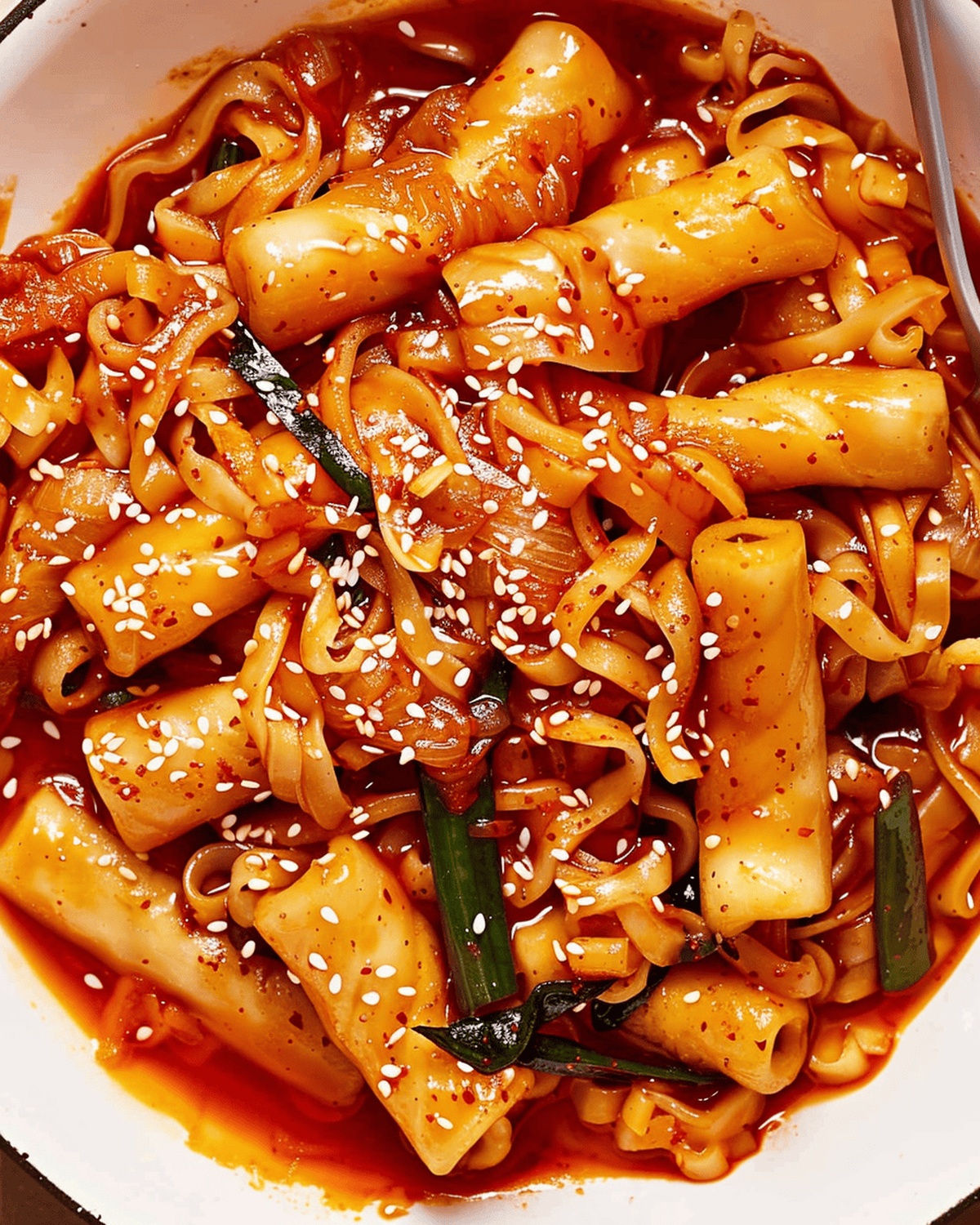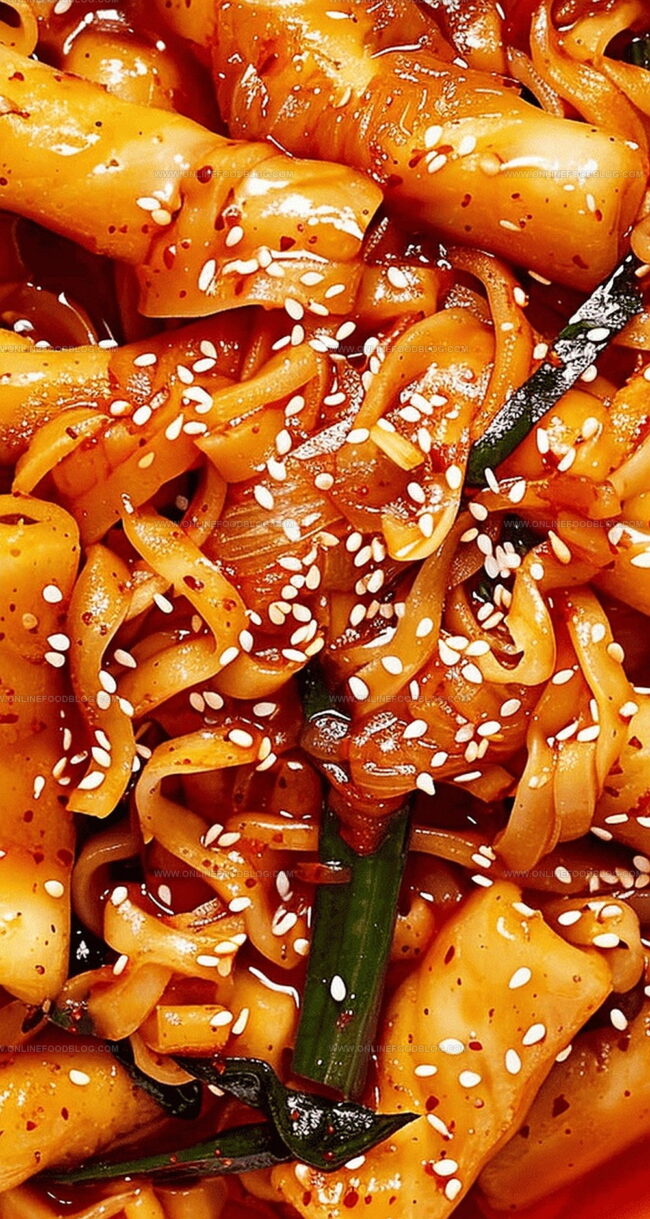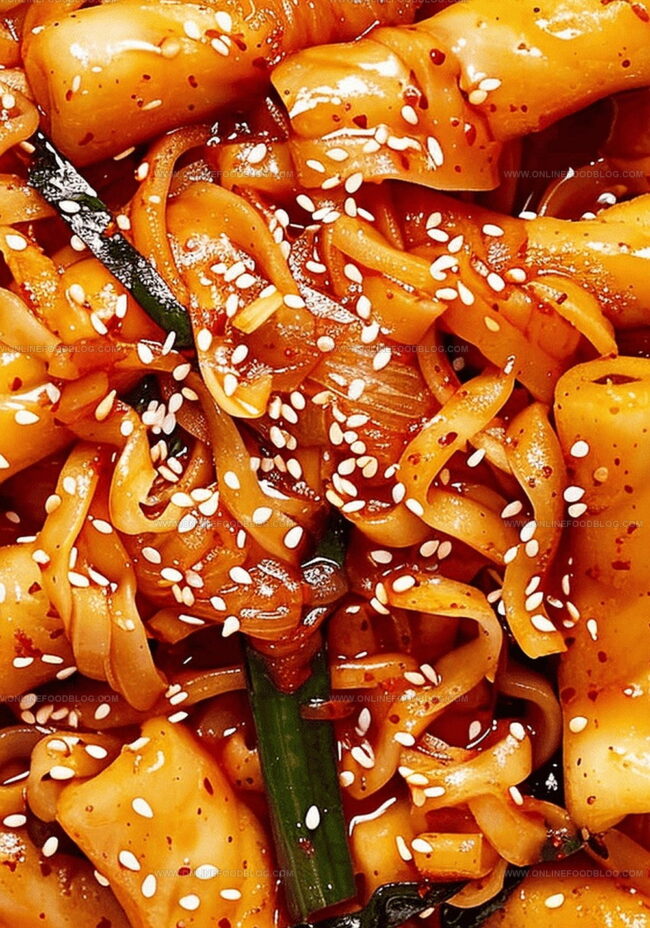Sizzling Korean Comfort: Homemade Rabokki Recipe
Sizzling streets of Seoul come alive with the irresistible spicy rabokki recipe that blends classic Korean comfort foods into one mouthwatering dish.
Chewy rice cakes and springy ramen noodles dance together in a fiery red sauce that ignites taste buds with bold flavors.
Every bite promises a culinary adventure packed with texture and heat.
Korean street food enthusiasts adore this quick and satisfying meal that combines the best of two beloved staples.
Restaurants and home cooks alike have embraced this spicy fusion dish that delivers maximum flavor with minimal effort.
Weeknight dinners will never be the same once you master this simple yet addictive recipe that brings Korea’s vibrant street food culture right to your kitchen.
Get ready to spice up your meal routine with this irresistible Korean classic.
Quick Recipe Overview
Ingredients for Rabokki
For Broth Base:For Protein and Noodle Components:For Seasoning and Garnish:Essentials for Making Rabokki
Cooking Guide for Rabokki
Remove fish cake sheets and frozen rice cakes from packaging. Allow them to naturally thaw at ambient temperature.
Slice scallion greens diagonally into small pieces. Cut fish cake sheets into thin strips.
Combine water, dried anchovies, and kombu in a large saucepan. Bring to a vigorous boil for three minutes. Remove seafood components.
Add instant ramen noodles to the hot broth. Gently separate noodle strands while cooking briefly. Transfer noodles to a separate bowl.
Introduce gochujang, oligo syrup, and chili powder into the pot. Stir until completely integrated. Add rice cakes and fish cakes, cooking until flavors merge.
Return noodles to the pot. Cook until perfectly tender. Remove from heat. Adjust seasoning with salt. Garnish with fresh scallion pieces and roasted sesame seeds. Serve immediately in warm bowls.
Add-In Ideas & Tweaks for Rabokki
Serving Suggestions for Rabokki
Planning Tips for Rabokki Storage
Print
Spicy Rabokki Recipe
- Total Time: 20 minutes
- Yield: 3 1x
Description
Korean rabokki blends ramen noodles and rice cakes in a spicy, savory sauce that delights street-food enthusiasts. Diners can quickly prepare this Seoul-inspired comfort dish with simple ingredients and enjoy its complex flavor profile.
Ingredients
- 3 ½ cups (828 ml) water
- 1 package (about 4.2 oz or 119 g) Korean instant ramen noodles, such as Nongshim Shin Original Ramyun
- 10 oz (283 g) frozen Korean rice cake sticks, such as Hansang
- 5 ½ oz (156 g) frozen fried fish cake sheets, such as Choripdong
- 5 medium dried anchovies
- 3 medium scallions
- 1 piece (about 4x1-inch) dried kombu
- 2 tbsps (30 ml) gochujang pepper paste
- 2 tbsps (30 ml) oligo syrup or light corn syrup
- 1 tbsp (15 ml) gochugaru red chili powder, preferably fine
- 1 tbsp (15 ml) roasted sesame seeds
- Kosher salt (to taste)
Instructions
- Prepare Base: Thaw rice cakes and fish cake sheets at room temperature until completely soft, then slice fish cake into 1-inch strips and chop scallions diagonally.
- Craft Stock: Boil water with dried anchovies and kombu for 3 minutes to extract deep umami essence, then strain and reserve aromatic liquid.
- Develop Sauce: Whisk gochujang, oligo syrup, and gochugaru into reserved stock, creating a vibrant, glossy spicy base with complex flavor layers.
- Combine Ingredients: Add rice cakes and fish cake strips to spicy sauce, stirring frequently to ensure even coating and heat distribution.
- Integrate Noodles: Cook instant ramen briefly in sauce, gently separating noodles and allowing them to absorb rich, spicy liquid completely.
- Final Touch: Season with kosher salt, garnish with fresh scallion greens and roasted sesame seeds for textural contrast and aromatic complexity.
- Serve Immediately: Plate while sauce remains glossy and ingredients are hot, noting natural thickening will occur as dish cools.
Notes
- Optimize Rice Cake Texture: Fully thaw rice cakes at room temperature to ensure soft, pliable consistency for perfect bite and absorption of spicy sauce.
- Master Seafood Stock Technique: Extract maximum umami by boiling anchovies and kombu precisely for 3 minutes, creating a rich foundational flavor base.
- Control Sauce Consistency: Whisk gochujang, oligo syrup, and gochugaru thoroughly to create a vibrant, glossy sauce that coats ingredients evenly.
- Serve Strategically: Enjoy immediately after cooking, as the sauce naturally thickens while cooling, enhancing the dish’s overall texture and flavor profile.
- Prep Time: 10 minutes
- Cook Time: 10 minutes
- Category: Dinner, Snacks
- Method: Boiling
- Cuisine: Korean
Nutrition
- Serving Size: 3
- Calories: 550
- Sugar: 10 g
- Sodium: 1,200 mg
- Fat: 15 g
- Saturated Fat: 2 g
- Unsaturated Fat: 13 g
- Trans Fat: 0 g
- Carbohydrates: 90 g
- Fiber: 3 g
- Protein: 20 g
- Cholesterol: 30 mg




Mia Reynolds
Food Writer & Home Cooking Specialist
Expertise
Easy Home Baking, Recipe Writing and Storytelling, Local and Seasonal Ingredients, Baking for Beginners
Education
New England Culinary Institute (NECI), Montpelier, Vermont
Community College of Vermont, Winooski, Vermont
Mia Reynolds fell in love with baking as a teenager experimenting in her family kitchen. Her passion took her to New England Culinary Institute, where she learned practical pastry techniques, and later to Community College of Vermont to deepen her understanding of food management.
Mia combines clear, simple baking instructions with heartwarming stories, making home baking approachable for everyone.